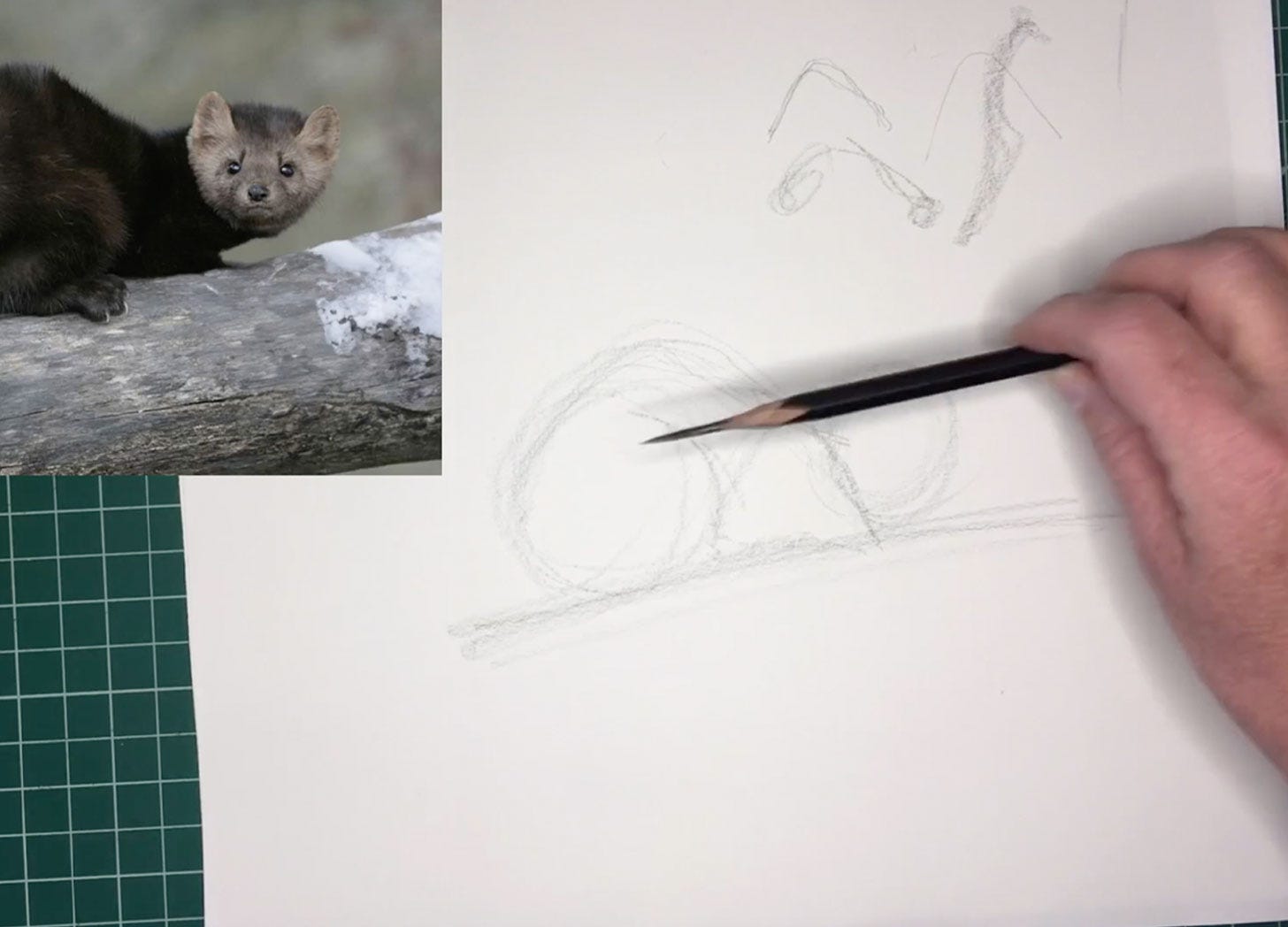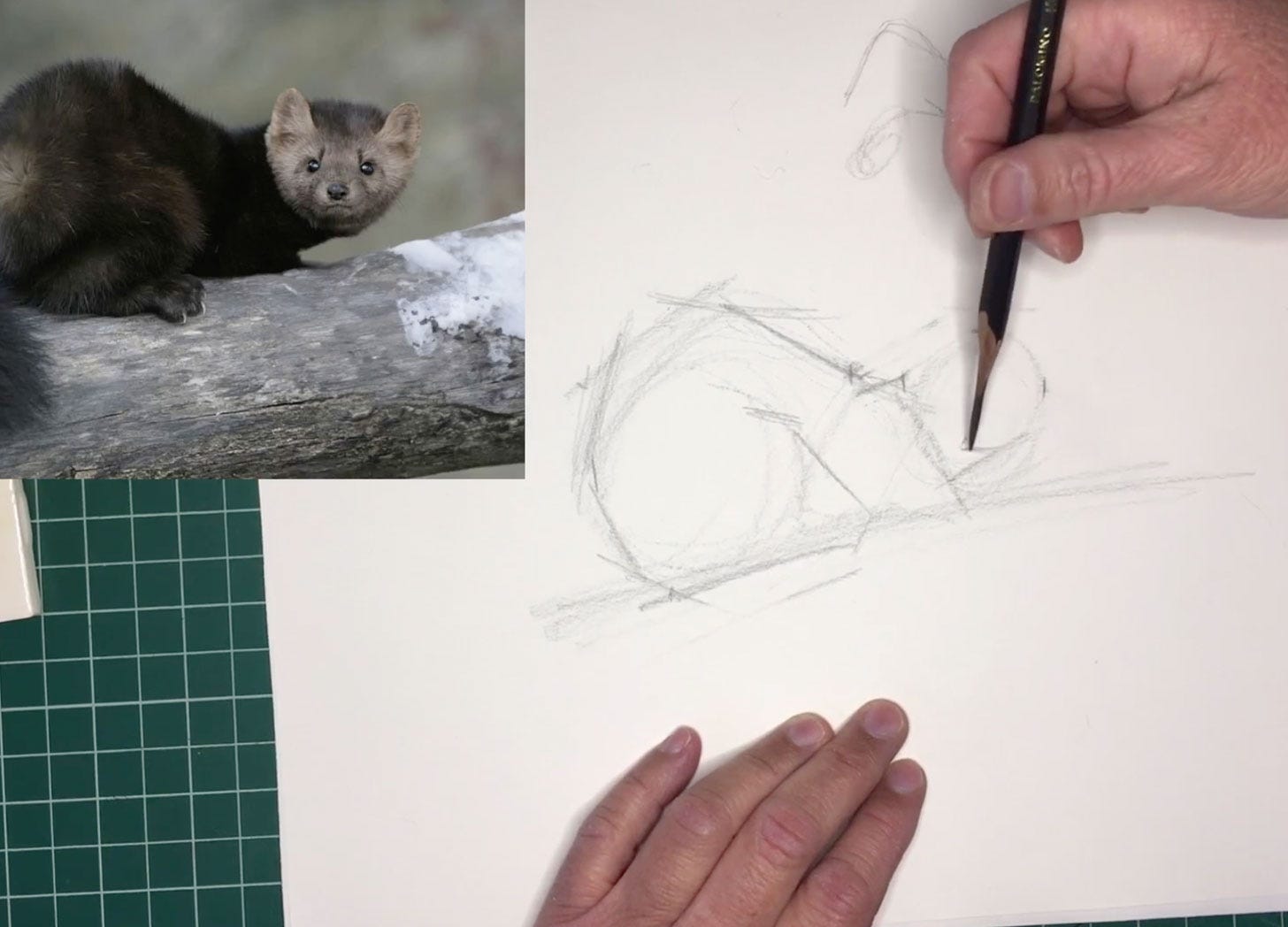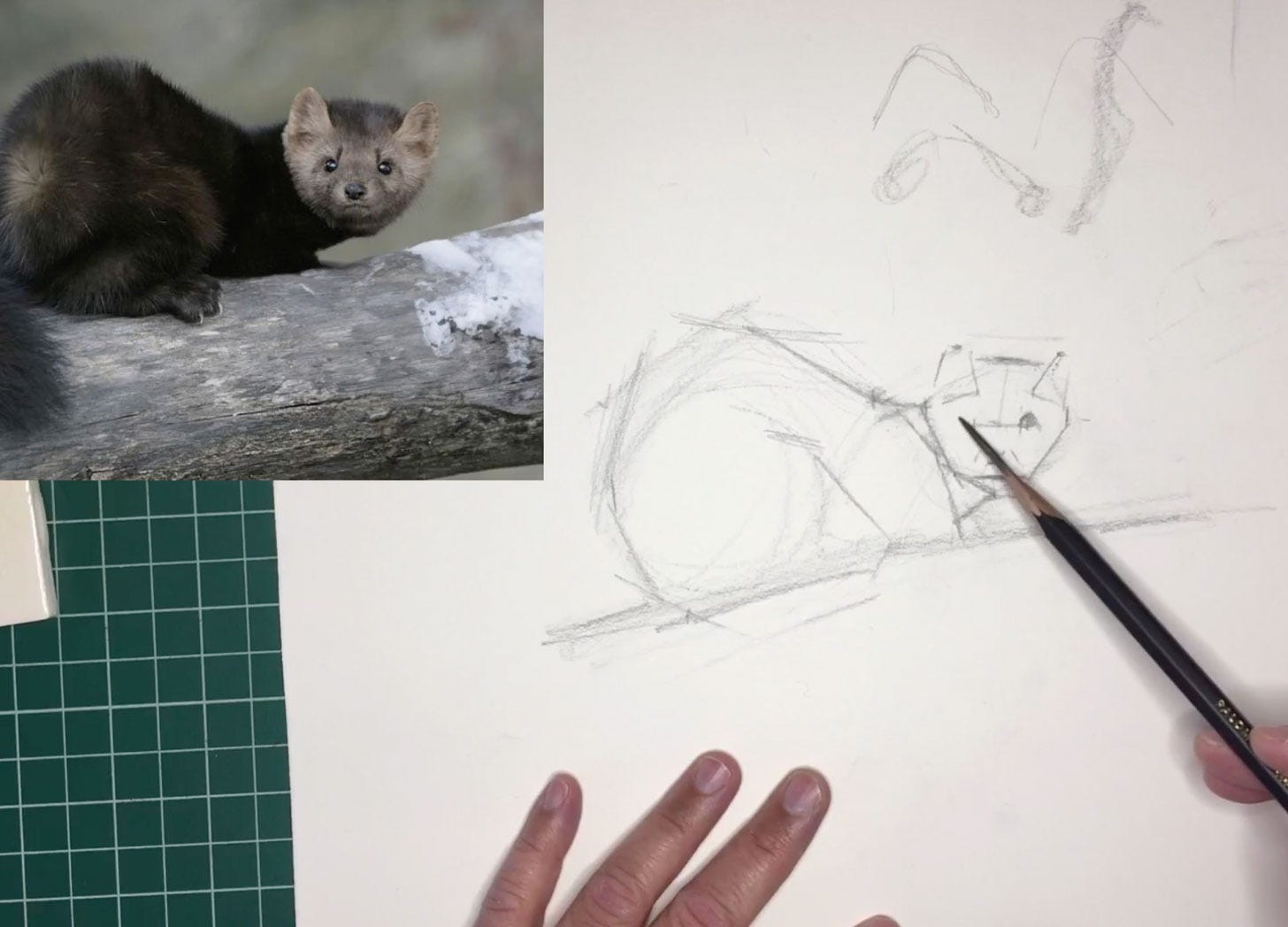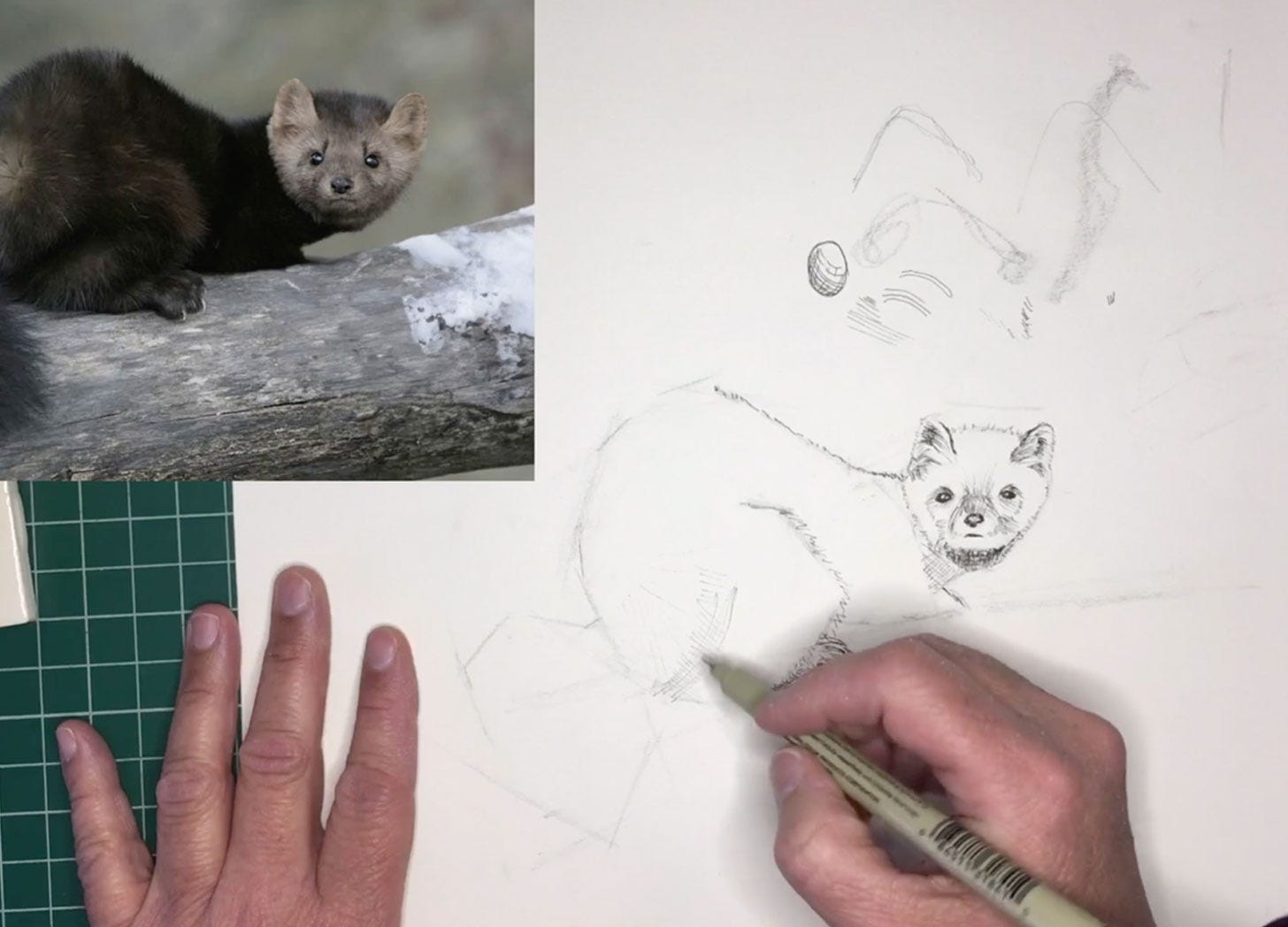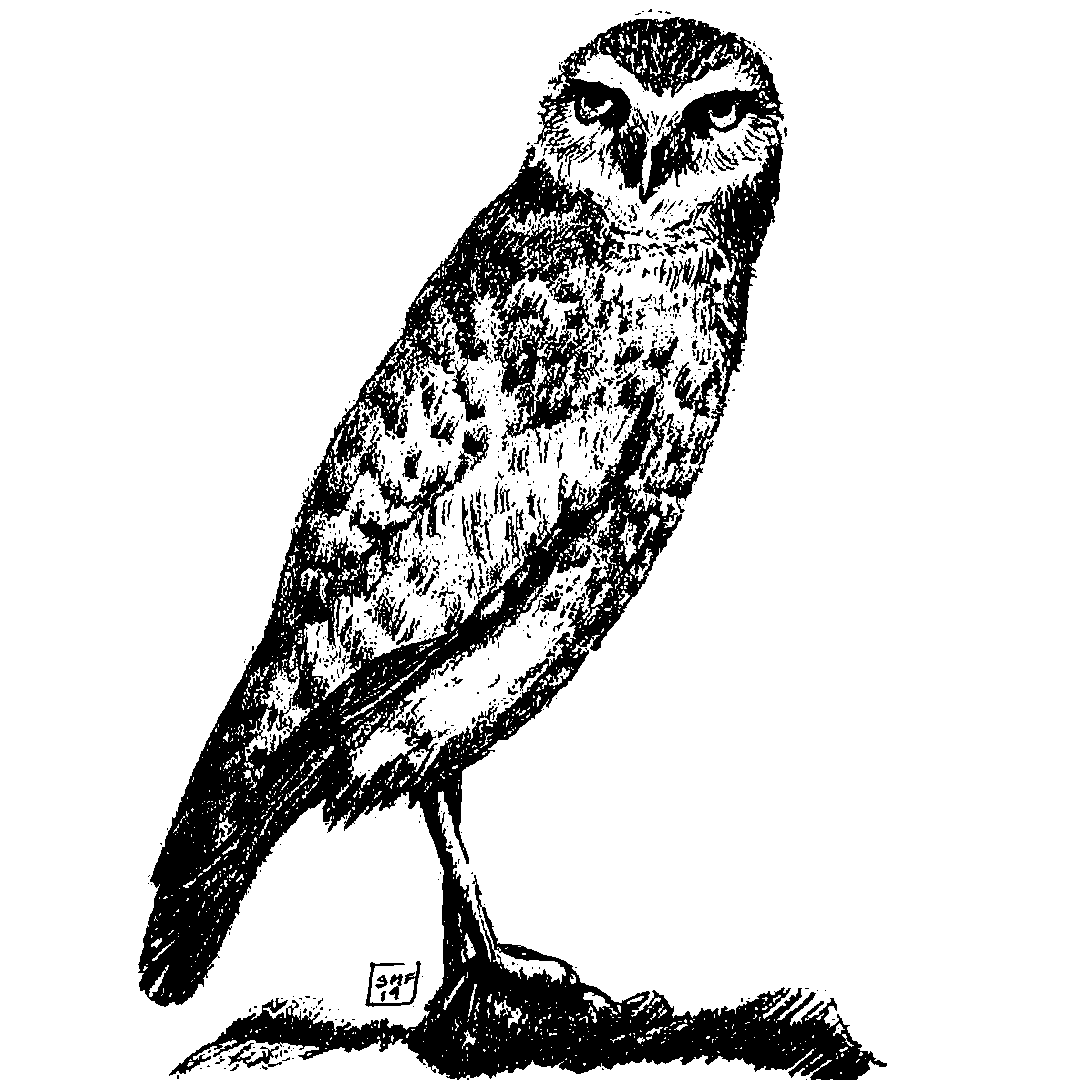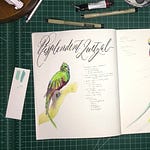Sorry I’m late posting last week’s Wonder-Filled Wednesday, but it couldn’t be avoided. My internet has been spotty, and then the weekend obligations kept me away from the computer, but here it is and I hope it’s helpful! Mark your calendars for our next livestream on 19 March at 1:30pm Eastern US Time.
Hi, friends!
Sketching animals in the field is difficult! They are not the most cooperative models, so I use “stages” to try to capture their essence and really lean into the concept of visual notetaking. I start with a gesture, or action, line and a few simple shapes. As time allows, I build on that to a more detailed drawing. Simultaneously, I’m adding written notes, color swatches, and any other information I may need to develop my nature journal entry further.
Livestream Notes
Gesture And Shape (Timestamp 1:48)
Using a simple line and a few shapes can be very effective in establishing the energy or essence of the subject. It’s a helpful beginning, but also a valuable end product when you only have moments to capture important information about a moving subject.
Refining Shapes/Adding Details (Timestamp 7:15)
If your reference is still hanging around but perhaps changed positions, you can still establish basic shapes. In combination with written notes and diagrams, maybe a color swatch or two, this is enough detail to use for further study.
Facial Features (Timestamp 20:55)
Eventually we build a sort of muscle memory encyclopedia of specimens the longer we work in our nature journals. Learning the basics of proportions and angles when placing the features gives us a foundation to build a specific creature’s head and face. The top and bottom of any head along with eye, nose, and mouth line will always be parallel in relation to each other. Start with that before plotting out distances between the features on the horizontal/vertical axis to create a realistic depiction of the subject.
Fur Texture And Direction (Timestamp 58:36)
Fur, feathers, and skin help to build volume, and I like to save that for the very last after I’ve established the basics like line of action, shapes, light direction, etc. It’s a very important part of creating a realistic drawing, but not the most important part, especially when you have to work quickly. Consider it similar to the icing on an eclair — without the pâte à choux and the crème anglaise, the icing is delicious but drippy chocolate without structure. All together, though, it’s heaven!
I hope you can join me for the next Wonder-Filled Wednesday. Until then!
xoSusannah
P.S. Keep scrolling for the prompt.
P.P.S. What’s on my easel this week? Keep scrolling to find out!
P.P.P.S. Join this episode’s chat to share your journal pages, your thoughts, and cheer on others!
Wonder-Filled Wednesday
Every Wednesday at 1:30pm Eastern US time (Time Converter), we marvel in our nature journals together — draw along with me or just watch, ask questions, etc. Livestreams are hosted on Notes for everyone, and recorded/archived for paid subscribers.
Download the app to join me live:
Prompt And Extra References For Practice
Listen to this episode with a 7-day free trial
Subscribe to Cricklewood Nature Journal to listen to this post and get 7 days of free access to the full post archives.




